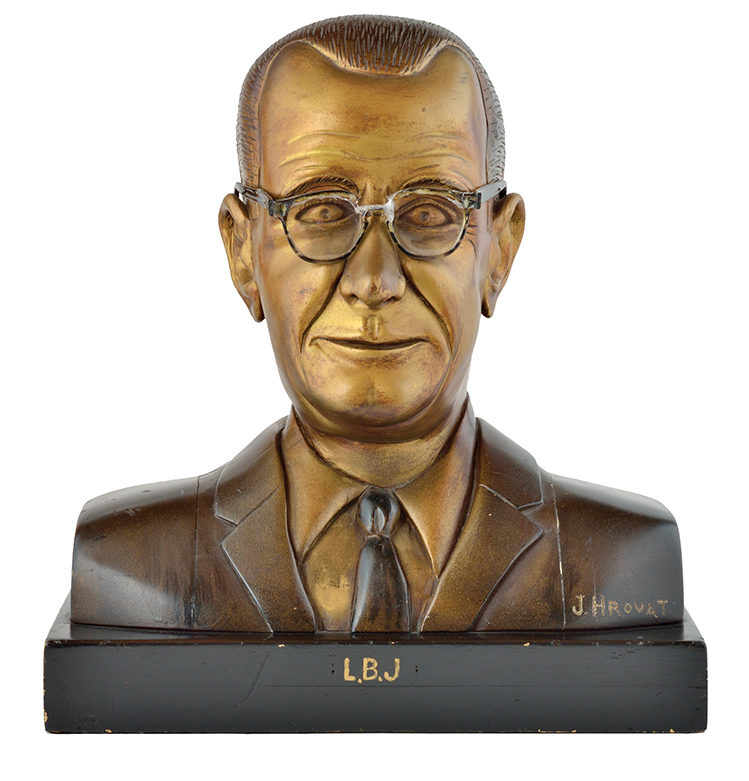
Joe Hrovat (American, born 1921), Lyndon B. Johnson Bust, ca. 1960, carved and polychromed wood, High Museum of Art, Atlanta, gift from the Levine Folk Art Collection.
At the end of 2020, the Museum announced a major acquisition of historical American folk art from the collection of Anne and Robert Levine. Comprising 114 objects that date from the seventeenth to the twentieth century, this gift includes a wide array of forms, from whimsical whirligigs to trade signs to commemorative plaques, all united under the Levines’ collecting theme, American history in wood.

Unidentified Artist, Abraham Lincoln Chopping Wood Mechanical Toy, ca. late nineteenth century, carved wood, High Museum of Art, Atlanta, gift from the Levine Folk Art Collection.
Most of the artists who created works in the collection are unidentified, but the Levines amassed numerous works by known artists including Vestor Lowe of Tennessee and Joe Hrovat, whose carvings of presidents Franklin D. Roosevelt and Lyndon B. Johnson are among more than two dozen representations of US presidents in the gift. Other works, such as Hellor K. Rissanin’s carving of President Dwight D. Eisenhower (ca. 1950) and violin maker Moise Potvin’s meticulously carved diorama of President Franklin D. Roosevelt and his historic 1933 cabinet, showcase realism and formal excellence.
Many of the other artworks feature the visual qualities, such as geometricized form and bold color, that first attracted modernist artists, collectors, and curators to folk art in the 1920s. These characteristics can be seen in the nearly abstract depiction of President Abraham Lincoln chopping wood and an angular whirligig depicting the turn-of-the-century champion boxer John Sullivan. As these works are presented in future exhibitions and permanent collection displays, they will greatly enhance the Museum’s renowned collection of folk and self-taught art and offer exciting new points of connection to its historical American holdings.